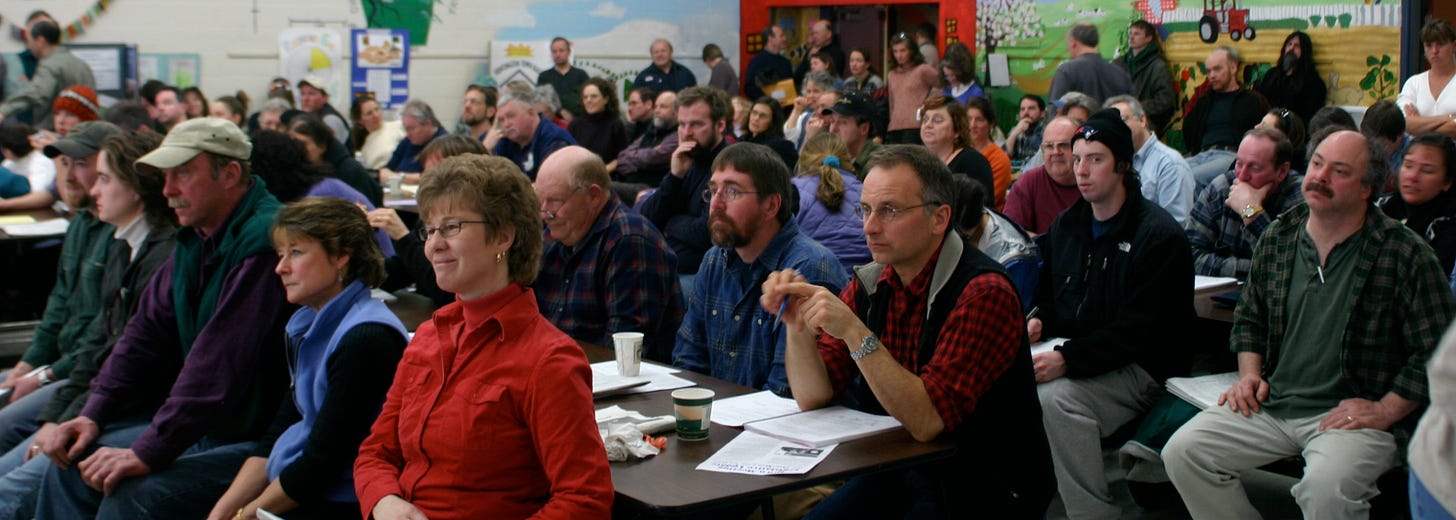The PPS Dispatch_006
Noticing as a portal and what we can learn from public space design for better community gatherings.
You can feel it right away, when you visit places where it feels like time has slowed down and you are able to just be, like a sun-speckled urban park along a riverbank. Places that invite us to take a seat or take a slow stroll, to be among people but not necessarily with people. A place to observe and notice, like walking through a bustling city square or a farmers market on a warm saturday.
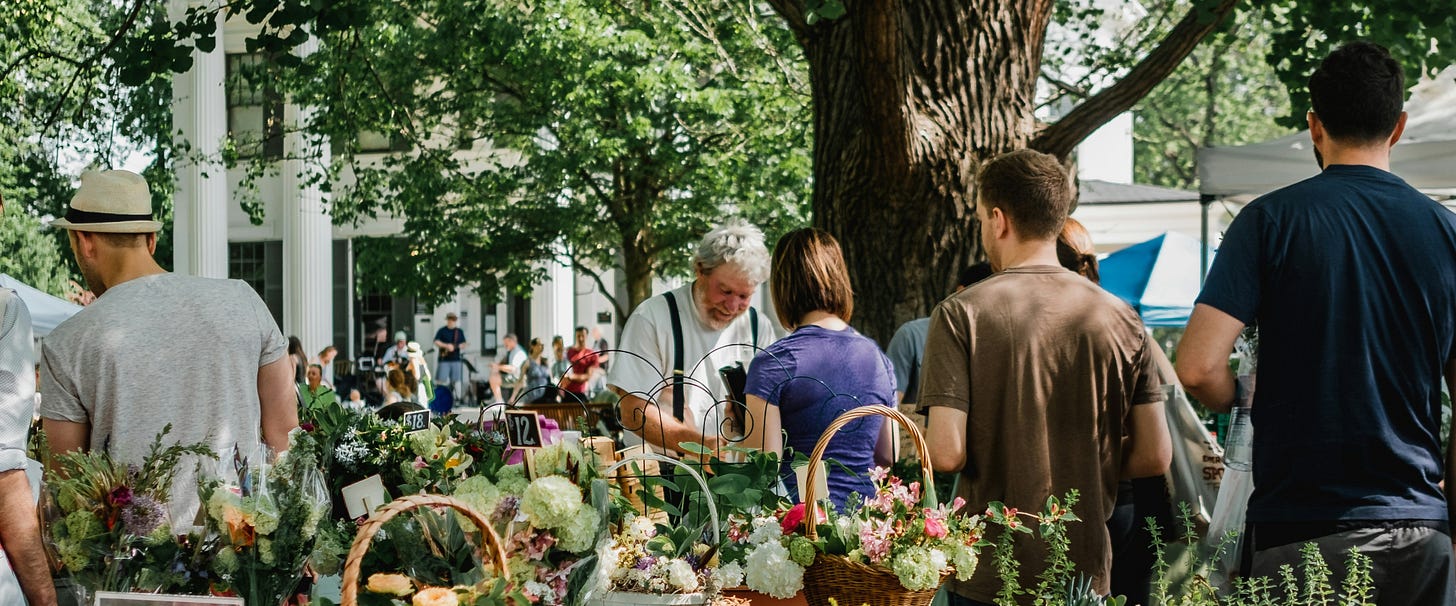
These are places where you want to linger and people-watch. Where you can take in an experience, think and reflect, and to make sense of the world around us. Similar to taking a rest on a wooden bench along a busy pedestrian area after a brisk morning walk.
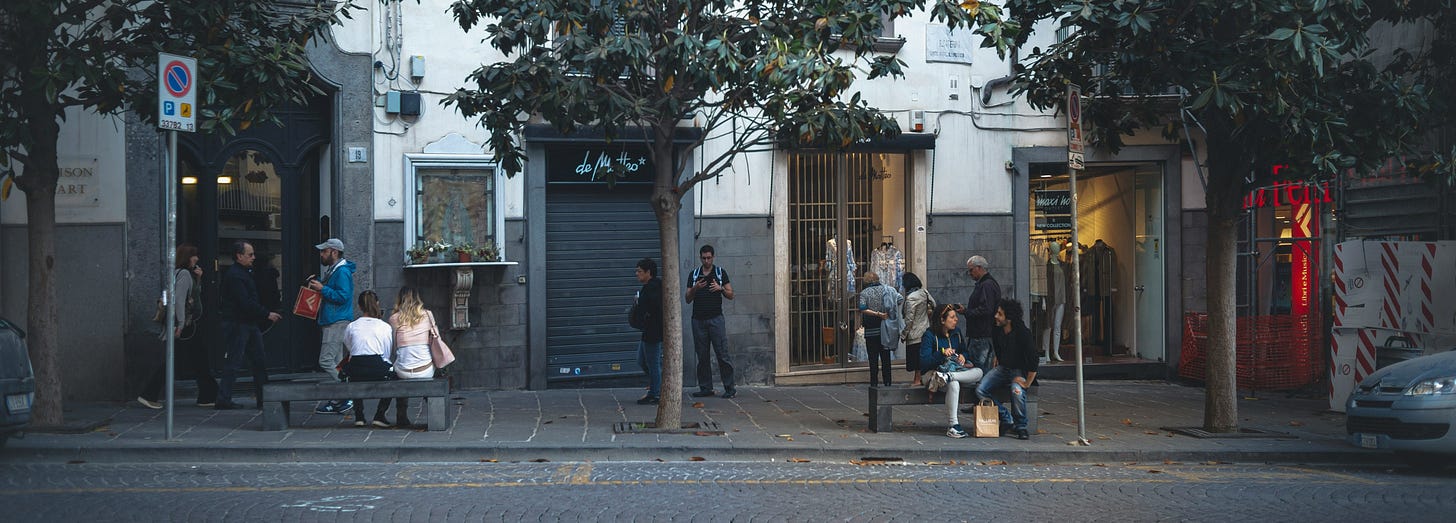
I am lucky to have lived in different places that have allowed me to build a collection of personal memories in places like that. Often the memories are vivid too. I remember details. I remember noticing smells, sounds, temperature, light, and even how I felt in the moment. And I remember having deep reflections and profound realizations in places like this.
Of course, your personal context, the reason for being there matters - if you are on vacation and have lots of time to explore and just be, you are going to experience a place like that differently than you would if you were rushing through on your way to work. However, there are design choices we can make to encourage and support our ability to notice and look more closely at the world around us.
The art of noticing
During my Master program in Design Ethnography, my professor started our first semester with a simple exercise that transformed my understanding of the value of noticing. Not only did it change my experience of being in a new place and culture, but It has stuck with me well beyond that. It is a practice I continue to build and leverage to this day.
One day, we walked into class and she promptly told us to set our stuff down and follow her. We went into a staircase in the University building. It was the first week of classes and we were a small group of mostly international students at the University of Dundee in Scotland. The Master of Design Ethnography was a unique and quite experimental program at the time. We were the 4th year going through the program, which was a collaborative MSc offered through the School of Computing, the School of Anthropology and the Master of Service Design program.
So we followed her into the staircase, which looked like most University staircases: metal railings, concrete walls, linoleum floors. And there was a window at the back wall looking out at campus life in front of a backdrop of the rainy, grey Scottish skies. Students and faculty were walking by as we took a seat on the stairs. She told us to sit and notice. That’s it. So we sat. And we sat, for a long time. And we observed and we noticed.
And slowly the world shifted from being a mass of textures, dull colors and mundane sounds to detailed bird sounds, contrasting brick patterns and complex human interactions. There was stillness and movement. Lights and shadow. There was me and there was all this…
We sat a bit longer to take some notes. Capturing what we saw, heard…and felt. And then we returned to our bodies and the present moment. And finally, the classroom. We did this exercise many times throughout the program and it became a simple and powerful practice, forming the foundation of our Ethnographer toolkit. It gave me a new way of seeing the world.

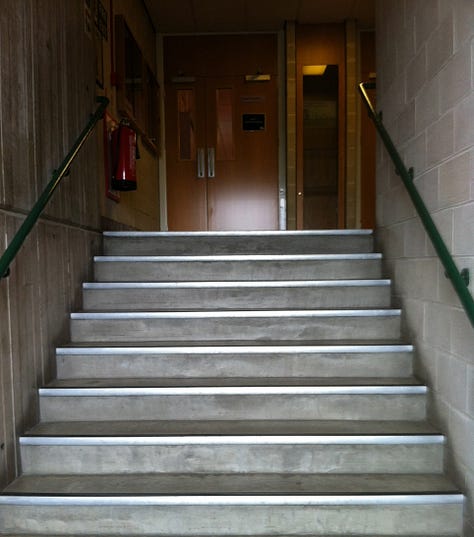
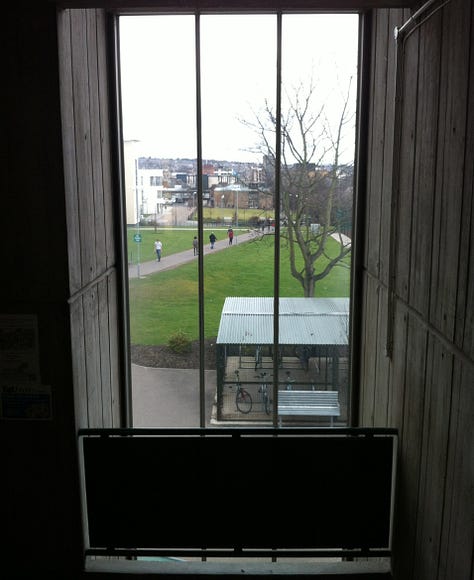
Becoming a prism: noticing the richness of particulars
Noticing and looking closely brings awareness to ourselves. And it expands our field of view and feeds our understanding. Seeing, really noticing, is processing inputs. It’s a way to slow down time to truly absorb information. In “Looking closely is everything,” Craig Mod talks about the power of noticing details, not just seeing things in groups.
"It requires an almost “unlooking” to see closely, a kind of defocusing. Because: We tend to see in groups, not details. We scan an image or scene for the gist, but miss a richness of particulars."
But I believe looking closely also puts us in a reciprocal relationship with each other. It is a powerful exchange of give and take. Noticing is a portal between the singular “I” and the multitude of different lived experiences and the complexity of it all. It helps us see the richness of the whole by focusing on the individual pieces. It helps us appreciate subtlety within complexity. Like the dispersion of light passing through a prism and making visible the many color fragments of one beam.
In German we say “Aufmerksamkeit schenken” literally, to gift attention. Being seen and understood is the pinnacle of human connection. Not as a part of a group or in passing, but as singular focus through gifted attention: being noticed and fully seen.
Yes, the ability to notice and look at things closely is an internal capacity that we can nurture. And just as there are important ways our physical spaces and the built environment can support this, there are experiential factors we can design to help create and nurture environments that support looking closely.
How might we create experiences and gatherings in which we look and listen more closely? What makes great community gatherings? What lessons can we learn from the built environment and apply to our social environments in order to encourage civic engagement, neighborliness, and connection?
The containers we design for community engagement
When we look at the way we come together as communities, the way we raise issues with each other, the way we problem-solve and collaborate, and the ways we gather, we often fall back on a few outdated models. Think about public forums, town halls or any other public event where you have engaged with members of your community, be it local government, community organizations, businesses or neighbors.
Often these happen in the middle of the day or on a week night, often they happen in dark rooms without windows. Usually chairs and tables are facing towards the front of the room, where someone will share information and request input or feedback in return. It’s designed for back and forth, one side against the other. These might happen in locations not accessible to all (whether it’s due to the lack of available transportation modes or maybe some groups simply don't feel welcome in that space or area). And these events often have a linear structure with rigid agendas of back and forth information sharing, rather than conversations and problem-solving in community WITH each other. There often isn’t a lot of intentional thought put into creating space and time for noticing and seeing or hearing each other. And recognizing the complexity of it all.
I spend a lot of time thinking about the mechanics of these kinds of events. There is so much opportunity to be more intentional with the social design, the containers we create for these kinds of interactions to happen. This is anything from how we market the events and reach potential audiences, to seating arrangements, to the time of day and the place of the event, to the agenda and content. But most importantly, its all the “little big things” that encourage noticing, looking closely and connecting with each other. The space matters, the vibe matters, the way we create space to BE together matters.
Lessons from public spaces for better civic engagement
How might we take lessons from designing physical spaces into the way we design community conversations, town halls, collaborations and civic forums to enable noticing? In the past I’ve talked about acting like Innkeepers, thinking about the art of hosting and creating containers for learning and making progress together. Gardening is another metaphor that comes up often, but I think there is also a lot to learn from design principles for public spaces:
Create spaces (physical and experiential) for lingering
We can design specific times and intentional spaces for people to linger for as long as they choose. We can offer space to be among people but with the choice to observe passively or participate actively.
Similar to a public space along a river, a park or a town square, places to linger enable us to be present and connect to a place in a deeper way.
Our senses are powerful tools that help us create memories and experience, in holistic ways, the places we find ourselves in. The more present we are in our cities — experiencing them with all of our senses — the less likely we are to dream of being somewhere else. (via Strong Towns)
Spatial and social designs that encourage serendipitous encounters
Encourage casual conversations through unstructured moments, casual seating and intentional spaces and times for connecting with each other. Support serendipitous encounters to sustain bridging loose relationships with our neighbors and broader community.
Like a streetcar neighborhood or a 15-minute city that offers walkable access to all everyday necessities, encouraging us to bump into neighbors often and serendipitously
Earlier studies explored the effects of more mundane sources of interaction and engagement on social relations. They noted the importance of opportunities for casual interaction afforded through such local features as street markets, residential squares, sitting-out areas and canal-side walks, or journeys on foot to a school or workplace, to perceptions of inclusion and a sense of community (Cattell and Evans, 1999; Cattell and Herring, 2002)
Sameer Vasta, argued that — because neighborliness is largely influenced by urban design — we should “design our cities for serendipity.” He’s right. Public spaces that are designed and programmed for serendipitous encounters keep us from becoming isolated from our neighbors — and can, over time, lead to more interconnected, resilient neighborhoods. (via Strong Towns)
Design for connection
We can enable face-to-face connection through small adjustments like circular seating, seating everyone at the same level (instead of using stages) and letting people move and adjust the setup as needed.
Think of a pocket park with benches, or modular and flexible spaces that create new points for connection in public spaces. Or even cafes and restaurants with movable tables.
It’s in public spaces that we are given the opportunity to reclaim the art of civil conversation as we seek to better understand the neighbor who is in front of us, not the neighbor that we would choose to socialize with. (via Strong Towns)
Even passive interactions in public space reinforce the sense of community and reduce the feeling of loneliness that medical professionals now consider a serious pathology. (Vikas Mehta, Public Space)
Keep it flexible
Create loosely structured agendas and be flexible as a facilitator (read the room, adjust as needed) to allow everyone to influence and guide the flow, speed and the direction of momentum and progress.
Just like placemaking and community efforts work best when they are grassroots / bottom-up: initiated and driven by the community and supported by a wide coalition of community stakeholders.
The quintessential image of public space does not have to be a child playing in a children’s playground with a disengaged and bored-stiff parent standing by the side, staring at a phone screen. Creating public spaces that respond to diverse motivations and desires will generate multiple reasons for many diverse groups to inhabit and cohabit public space (Vikas Mehta, Public Space)
With community-based participation at its center, an effective placemaking process capitalizes on a local community's assets, inspiration, and potential, and it results in the creation of quality public spaces that contribute to people's health, happiness, and well being. (via Project for Public Spaces)
Always, always focus on the “little big things”
There are the aspects of a warm, memorable and successful gatherings that are intangible. They are the invisible glue holding together a beautiful atmosphere of comfort, joy, and connection. Think about things like the music, the lighting, the food and drink. But most importantly I think this is about creating a vibe. As a host, creating the vibe is the foundation for everything else and it requires truly being present, intentional, vulnerable, curious, kind, anticipatory, responsive, inclusive and generous.
I think about the elements that are part of our built environment’s overall vibe: the landscaping, the art, the sounds, the lighting and the atmosphere. It’s also how connected we feel to our neighbors and our community. All this impacts how we experience a place and our relationship to it.
Gatherings crackle and flourish when real thought goes into them, when (often invisible) structure is baked into them, and when a host has the curiosity, willingness, and generosity of spirit to try. (The Art of Gathering, Priya Parker)
Both, our built and social environments influence our ability to notice and connect. And being intentional with the places and the experiences for gathering is a way to help us see the world with all its richness of particulars.
Thanks for coming along!
Lena with Process/Practice Studio
P.S. Hit reply if you have thoughts or want to share other examples of physical or social design that enable noticing and connecting with each other.
P.P.S. I have a hard time separating the “personal-me” and the “professional me” and to be honest, they have grown so intertwined, I have stopped trying.
“Personal and professional wires don’t just get crossed, they grow intertwined” (Clara Syme, Owen Nichols of a83 via Dwell)
With that, I write my more personal reflections on language, culture, sense-making, and my journey into indie life over at For Now and have written a sister article on noticing. So that post is connected to this one by a sibling-like bond, each has a different lens and different role to play in this exploration…



